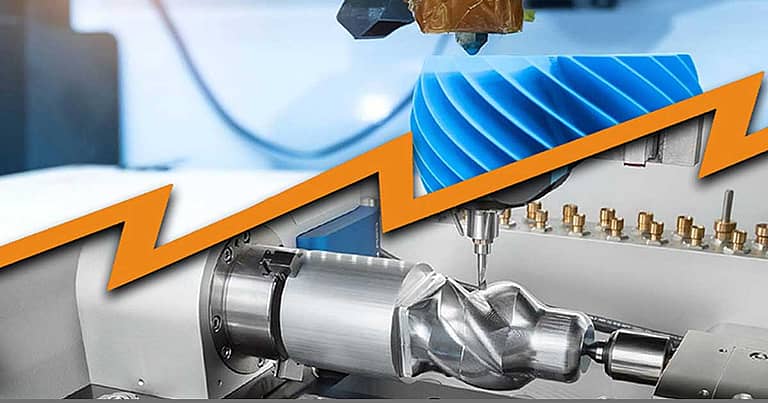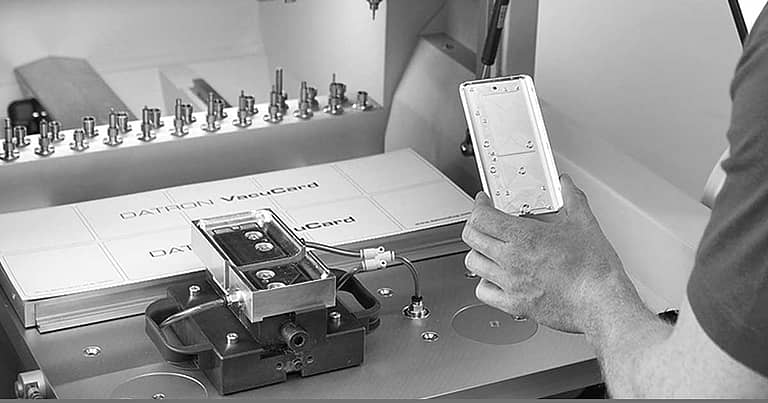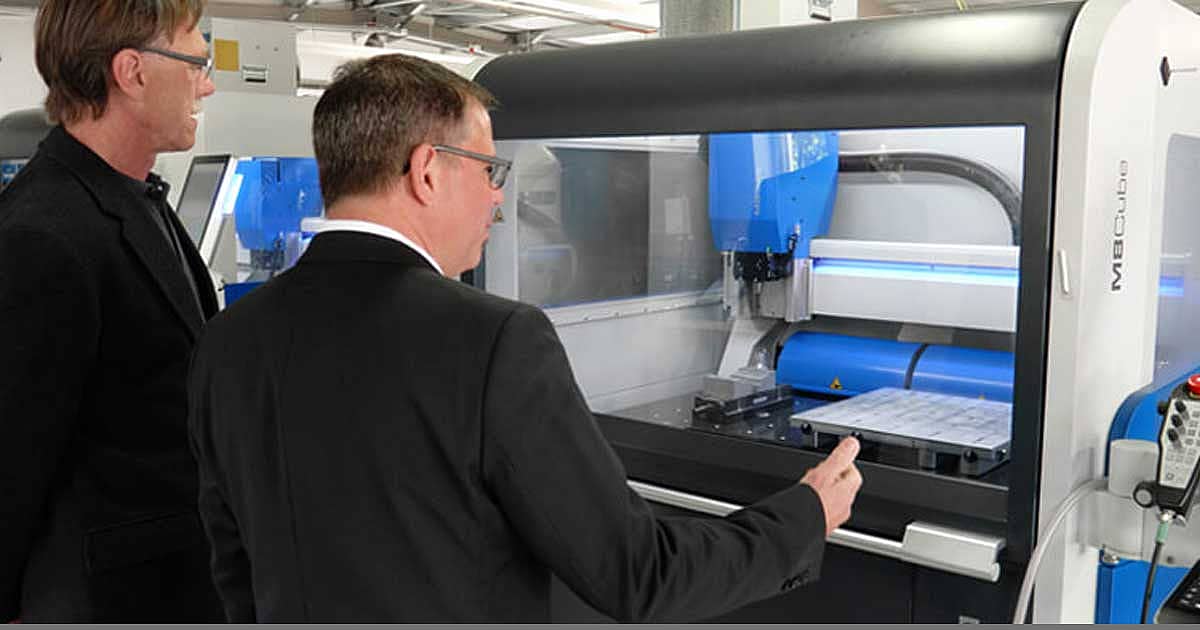
Find the Best CNC for Rapid Prototyping
The road to insourcing your prototyping can be a long, yet knowledge-filled journey. Hopefully our previous discussions on rapid prototyping in-house have educated and inspired you to take the reins on manufacturing your own prototypes. Now it’s time to think about how to find the best CNC for rapid prototyping.
Once you’ve decided to take the plunge, where do you begin? After you’ve tackled the question of whether to use additive or subtractive methods, it’s time to start picking the machine that’s right for you. If you decided that a CNC machine is part of your solution, you’ve come to the right place! Let’s take a deep dive into the CNC universe and help make sense of it all.
How Do I Choose the Right CNC Machine?
Before looking outward for the right CNC machine, it’s best to look inward at your product line up. Understanding the requirements of your own products will help define what machine is the best fit for your prototype lab. Define what materials you’ll be working with, what dimensional tolerances you need to hold, and what sort of geometric features you need to create.
Besides the mere functionality of the machine, it’s also critically important to examine what it’s like with day-to-day use.
- Is the machine easy to use and maintain?
- Is programming the part inherently difficult?
- Will there be support available when you need it?
- What will it cost to power and tool up the machine?
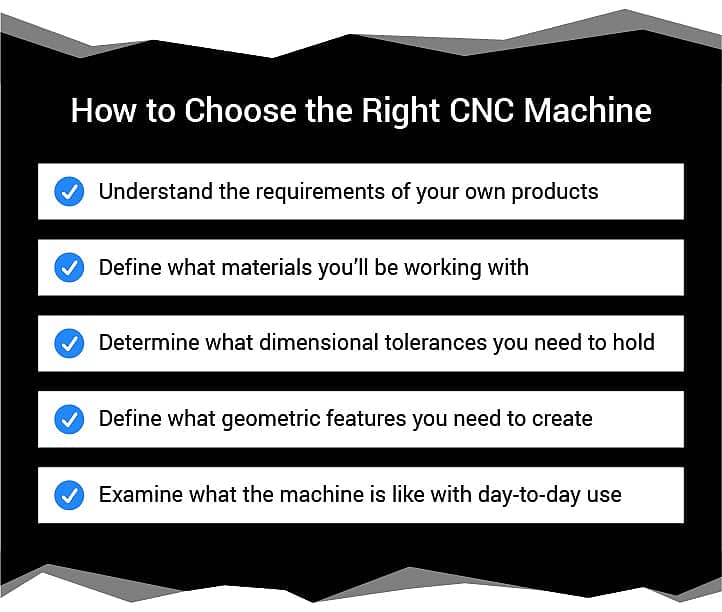
What Are My CNC Options?
There is an extremely wide variety of CNC machines available for your consideration – it can be a daunting task when presented with all the options. Not to worry, though – this is where you fall back on the basic questions: tolerance, shapes, and materials. Keeping these in mind will help make choosing the right machine a lot easier.
Let’s break it down:
CNC Plasma Cutter
Commonly used for steel sheet metal, a CNC plasma cutter is an affordable, fast, and efficient way to burn through a variety of conductive materials. While there are some multi-axis plasma cutters on the market, they are commonly 2 axis machines. The drawbacks of CNC plasma cutters in rapid prototyping are its inherent limitations in 2 axis form, relatively poor cut quality, and hefty workplace safety requirements. Unless you’re enhancing a fabrication/welding process in your prototyping facility, a CNC plasma cutter is probably not your best bet.
CNC Laser Cutter
A step up from plasma, CNC laser cutters have grown in popularity in recent years and it’s easy to see why. Lasers can cut a wider variety of materials besides metal, including plastics, wood, and fabrics, all with relative ease.
As well, they can quickly create detailed (yet shallow) engravings. On top of that, they work very quickly and are typically cleaner, self-contained units.
However, there are some issues with using laser that need to be considered. Lasers use immense amounts of heat to break through the material, which can harden edges, making them more brittle. Also, despite being quite accurate, laser cuts will leave a slight taper on edges, which can hinder dimensional accuracy needs.
Since laser cutters are typically 2 axis machines, they are limited on what features they can create. While they can ablate away layers to create greater feature depth, they do so very inefficiently with regard to energy consumption and time, at the cost of potentially warping the part from excessive heat. This narrows the effective use of CNC laser cutters considerably, especially for rapid prototyping.
CNC Waterjet Cutter
Waterjet cutting is an effective way to cut thin or thick material of nearly any type. Using high pressure water along with an abrasive media, called garnet, water jet is a great substitute for laser or plasma cutting. It also creates less waste by using a closed-loop water circulation system. The downside to all of this comes with the cost of up-keep; maintaining filters, pumps, and nozzles can be a significant task. When comparing to CNC laser cutting, CNC waterjet is fairly inaccurate, typically only capable of holding a 0.005” tolerance, however, the cut quality may be nicer.
CNC Router
While routers are a type of CNC milling machine, they are usually categorized completely separately. This is primarily due to their design: CNC routers have a gantry frame construction, with a large bridge spanning over the machine table. This inherently allows for a large work envelope without sacrificing floor space. CNC routers are typically tasked with milling large panels of wood, plastic, or softer metals, like aluminum.
They also have the ability to mill with all 3 axis which allows for more complex features than the previous three machines, such as counterbores, chamfers, and pockets.
Keep in mind, if you’re new to the concept of machining, learning to use a CNC router will have a steeper learning curve than the other items mentioned. There’s a lot to learn about machine control, cutting strategies, milling tools, etc… Also, routers are typically disregarded by most machinists because of their lack of rigidity and accuracy, thus making them a distinct upgrade from CNC waterjet, but not quite as precise as a CNC mill.
CNC Lathe
Lathes are an essential part of the history of machining. Being called “mother of machine tools” dating back as far as the 13th century, lathes have since evolved to adopt CNC technology, and are still integral to manufacturing today.
Unlike the previous equipment, lathes are built to machine round parts exclusively. Where a CNC Router has stationary material and a spinning tool, lathes have spinning material and stationary tools.
This is highly ideal for cylindrical parts, like bolts, tubes, and washers, especially when very tight tolerances are necessary (less than 0.001”).
While a lathe is extremely capable and useful, it may not be your first choice when building your prototype lab. Unless your products are ideal lathe parts, like those mentioned above, a lathe is a bit too focused to be a well-rounded rapid prototyping machine.
CNC Milling
A CNC mill is one of the most common tools to see in a prototyping lab – and for good reason. Mills are robust, and flexible machines, that are suitable for a wider variety of parts and materials then the other machines mentioned. Allowing for complex features, like threaded holes, deep pockets, and 3D surfaces.
Typical CNC mills use a “C frame” design – a spindle that moves up and down, and a table that moves left/right and back/forth. With an extremely heavy build and large footprint, they are quite reputable for their precision, often holding tolerances of 0.001” or less – a quality that most of the aforementioned machines are not well known for.
Roadblocks to CNC Milling
The biggest hurdle to overcome with CNC mills isn’t “What can it make?”, but “Who can make it?”. There are layers of complexity to using a CNC milling machine – first, the operation of the control is an art unto itself. Typical CNC controls are extremely capable, but quite intimidating. With a vast array of buttons, switches and knobs, alongside a deep structure of software functions and menus, most controls will likely have you holding onto a user’s manual for dear life.
Then there’s the setup of the machine, which is a critical task for creating quality parts. This involves alignment of workholding to the machine’s axis, loading and measuring of tools, and setting correct program parameters. When done improperly, in the best case; you have successfully made scrap parts and need to start all over again. In the worst case; you have broken tools, workholding and machine – creating a serious dilemma and effectively making “rapid prototyping” an oxymoron.
Last, but not least, there’s programming. Aside from operating the machine, there’s a bit of skill required to programming a part in a CAD/CAM software. This, luckily, is getting easier all the time, with excellent options like Autodesk Fusion 360 which can simplify the process for new users. However, the hardest part is often not with applying toolpaths, but with setting the right parameters. Choosing the right cutting tool, feed rate, spindle speed, depth and width of cut, can be an uphill battle – and it changes by what material you use, and what features you make.
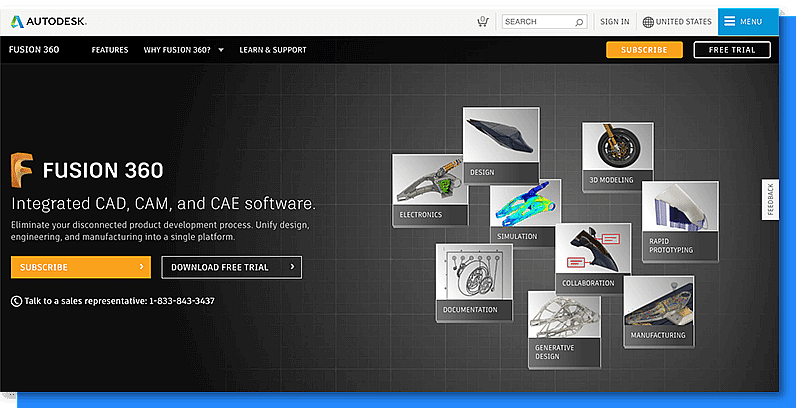
Striking the Right Balance
There are a lot of options, but the answer seems straight-forward; the most well-rounded rapid prototyping solution is CNC milling. However, the barrier to entry is real. Having an experienced CNC machinist on staff becomes a prerequisite, and as you may have heard, finding a qualified CNC operator is not getting any easier.
The issue is clear – there’s a skills gap in manufacturing that needs to be addressed, but even if drastic measures were introduced now, it will be many years before skilled labor starts in the workforce.
DATRON has been listening to this concern over the past decade, and they know just how to solve it.
While computer power and capability has made significant strides over the past decade, the typical CNC control has not. It’s still as cumbersome to use as ever, making alternative manufacturing technologies like 3D printing even more desirable. If convolution is the problem, then the solution is simple, or rather, the solution is to simplify.
CNC Milling for the Modern Era
Simplification is the goal with DATRON’s next control. Next is designed from the ground-up to focus on ease-of-use, without sacrificing industrial capability. With a familiar tile-based design, not unlike a smart phone, next is uncluttered and easy to understand immediately. Besides a pleasant visual design, next incorporates clever software engineering to make setup easy. The CAM Wizard walks you through loading the program, setting the tools, even probing the workpiece, as painlessly as possible.
Upgrading the control is just one way DATRON makes CNC milling more approachable. Setting up workholding has been optimized by utilizing a conical grid system, for quick and repeatable fixturing without any need to manually align. As well, accessories like vacuum tables make machining plate material quick and painless.
I know what you’re thinking. That’s all great, but what about the programming part? DATRON has that covered, too. To make every step of the journey easy, DATRON manufactures their own cutting tools, which are optimized for the machines they make. Likewise, they provide a full cutting parameter guide for their highly reputable line of single flute end mills.
Besides all that, DATRON manufactures a variety of machines with large work envelopes, and small footprints. Thus, a DATRON can yield the benefits of a large CNC router, with the precision of a CNC mill, and, with an optional rotary axis, some of the capabilities of a CNC lathe. All this flexibility, without the steep learning curve, is what makes DATRON the ideal CNC machine for a rapid prototyping facility.
So, hopefully this helped you along on your journey to find the right CNC machine for your prototyping needs. No matter what direction you’re thinking, when it comes time to make that decision, give us a call for some guidance.





